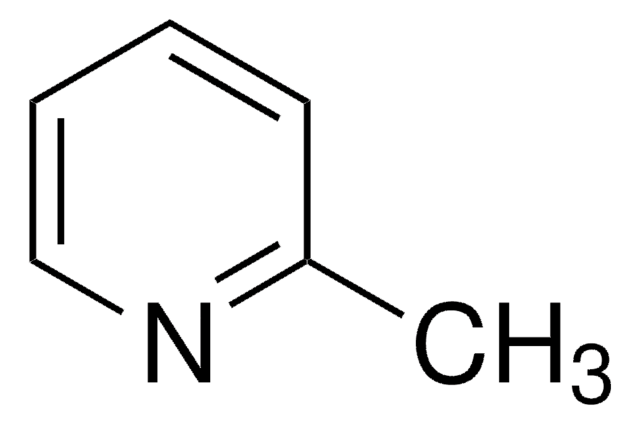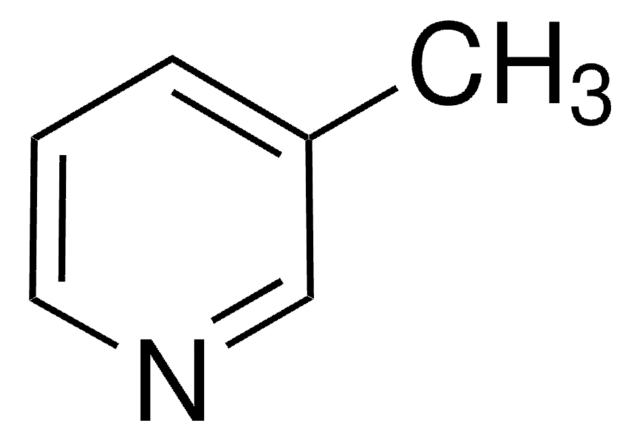74350
2-Picoline
analytical standard
Sinónimos:
α-Picoline, 2-Methylpyridine, NSC 3409
About This Item
Productos recomendados
grado
analytical standard
Nivel de calidad
densidad de vapor
3.2 (vs air)
presión de vapor
10 mmHg ( 24.4 °C)
Ensayo
≥98.5% (GC)
temp. de autoignición
995 °F
caducidad
limited shelf life, expiry date on the label
lim. expl.
8.6 %
técnicas
HPLC: suitable
gas chromatography (GC): suitable
impurezas
≤0.5% water
índice de refracción
n20/D 1.499-1.502
n20/D 1.500 (lit.)
bp
128-129 °C (lit.)
mp
−70 °C (lit.)
densidad
0.943 g/mL at 25 °C (lit.)
aplicaciones
cleaning products
cosmetics
flavors and fragrances
food and beverages
personal care
Formato
neat
cadena SMILES
Cc1ccccn1
InChI
1S/C6H7N/c1-6-4-2-3-5-7-6/h2-5H,1H3
Clave InChI
BSKHPKMHTQYZBB-UHFFFAOYSA-N
¿Está buscando productos similares? Visita Guía de comparación de productos
Descripción general
Aplicación
- Cigarette smoke using reversed-phase high-performance liquid chromatography–electrospray ionization tandem mass spectrometric method (RP-HPLC–ESI-MS/MS).
- Chinese faint-scent cigarettes using gas chromatography–mass spectrometry (GC–MS) technique.
Palabra de señalización
Danger
Frases de peligro
Clasificaciones de peligro
Acute Tox. 3 Dermal - Acute Tox. 4 Inhalation - Acute Tox. 4 Oral - Eye Dam. 1 - Flam. Liq. 3 - Skin Corr. 1C - STOT SE 3
Órganos de actuación
Respiratory system
Código de clase de almacenamiento
3 - Flammable liquids
Clase de riesgo para el agua (WGK)
WGK 1
Punto de inflamabilidad (°F)
84.2 °F - closed cup
Punto de inflamabilidad (°C)
29 °C - closed cup
Elija entre una de las versiones más recientes:
Certificados de análisis (COA)
¿No ve la versión correcta?
Si necesita una versión concreta, puede buscar un certificado específico por el número de lote.
¿Ya tiene este producto?
Encuentre la documentación para los productos que ha comprado recientemente en la Biblioteca de documentos.
Protocolos
US EPA Method 8270 (Appendix IX): GC Analysis of Semivolatiles on Equity®-5 (30 m x 0.25 mm I.D., 0.50 μm)
Nuestro equipo de científicos tiene experiencia en todas las áreas de investigación: Ciencias de la vida, Ciencia de los materiales, Síntesis química, Cromatografía, Analítica y muchas otras.
Póngase en contacto con el Servicio técnico








